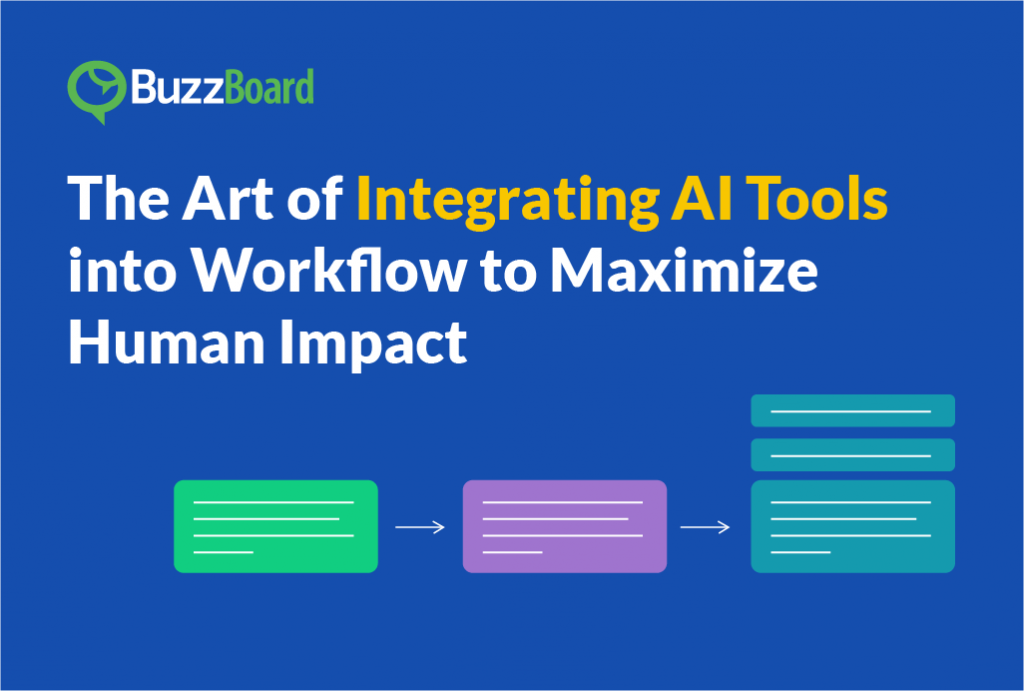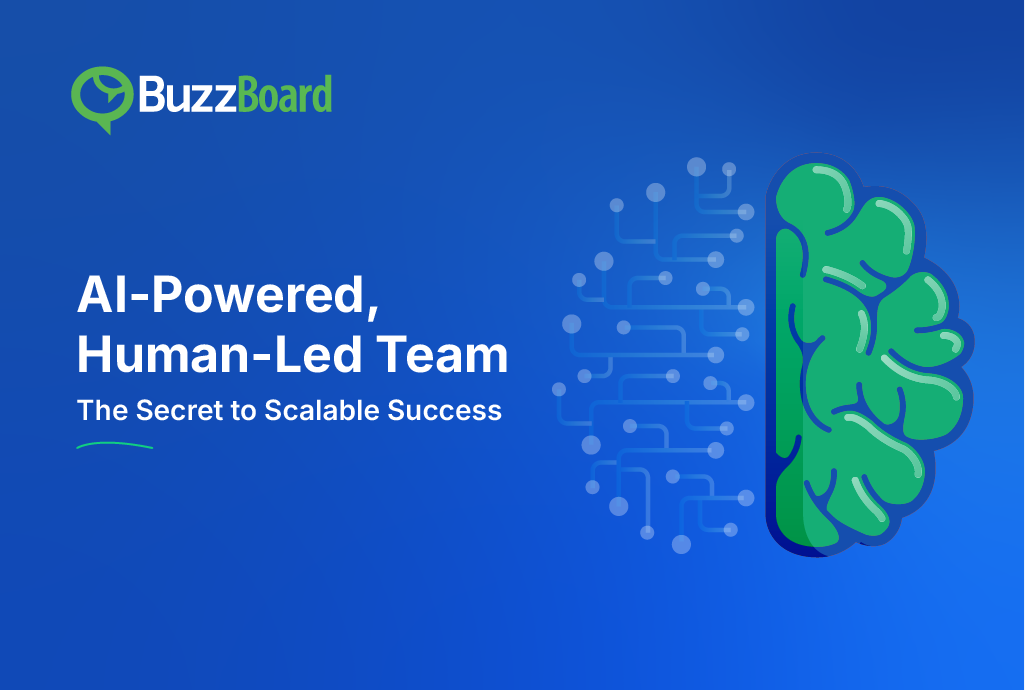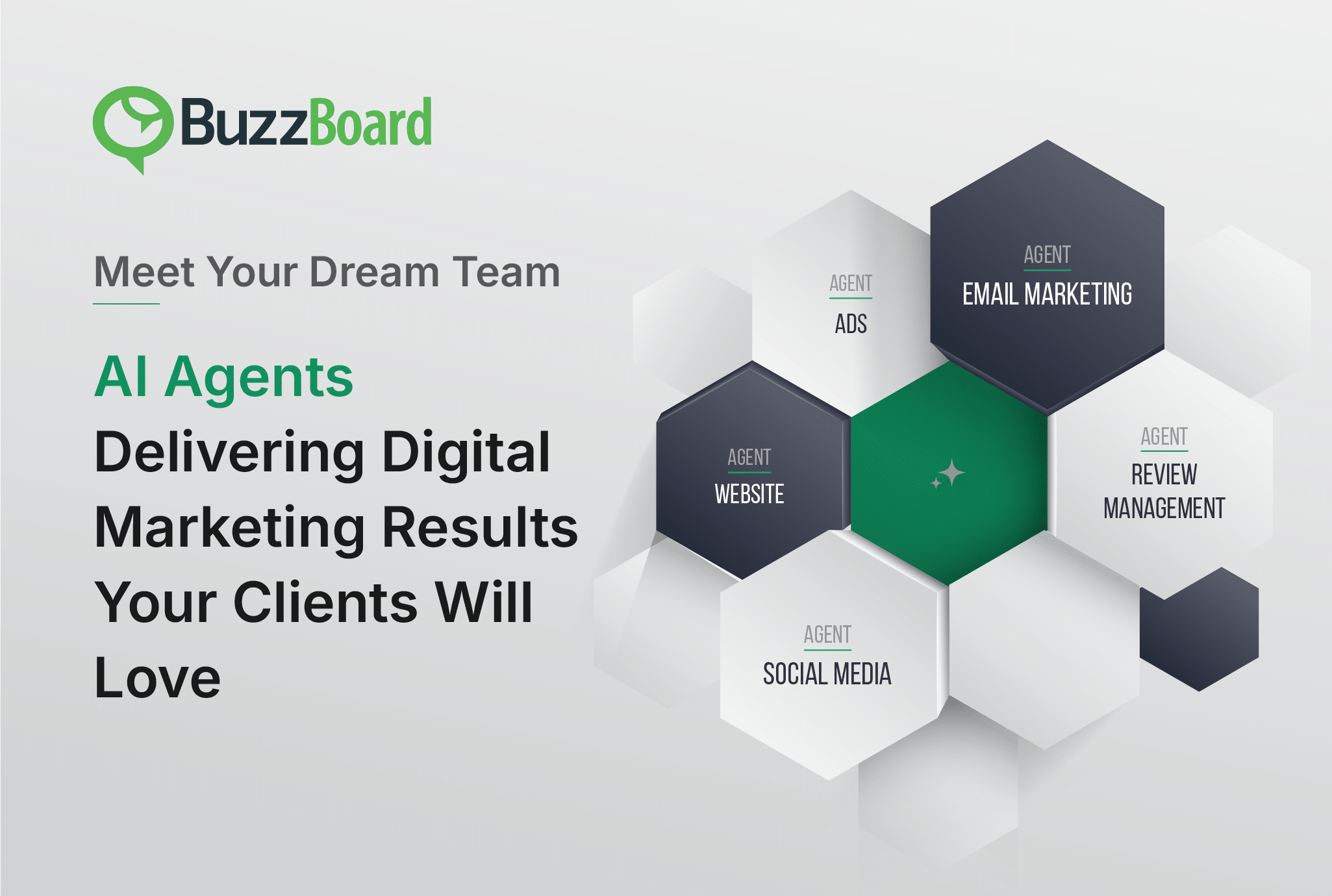AI technologies have transcended their initial novelty, becoming indispensable aides in streamlining processes and augmenting human capabilities. Yet in many domains, an artificial ceiling looms over day-to-day operations—the ceiling of our own limited time and mental bandwidth. Even as technology has delivered a deluge of data and analysis, we struggle to synthesize insights at the speed modern business demands.
The key to successfully leveraging these technologies is thoughtful integration that aligns with overarching goals and complements human strengths. And AI integration into a workflow done right promises to elevate the human experience. With the relentless barrage of specifics off their plate, workers gain capacity to listen, reason, and create on a higher plane.
Leaders play a pivotal role in ushering in this future by fostering a culture that embraces AI positively rather than as a threat. This means providing training and resources for employees to harness AI comfortably and effectively. It also requires anticipating points of disconnect or resistance so they can be resolved through transparency and compassion. With people centered at the heart of process innovation, integrating AI can unlock new dimensions of human potential. Let’s breakdown, how as an entrepreneur or sales chief, you can integrate AI tools into your workflows to future-proof your business.
Align Your Aspirations with the Capabilities of AI
Integrating AI tools into your workflow demands more than enthusiasm; it requires a strategic approach that begins with identifying the right tools.
The realm of AI tools is vast and diverse, offering a plethora of options—ranging from machine learning algorithms to natural language processing frameworks. The crux lies in discerning which tools harmonize best with the unique needs and intricacies of your workflow. It’s about precision, not just in technology, but in understanding the specific challenges and opportunities within your operational framework.
Consider conducting an audit of current workflows, focusing on quantifying key metrics, like cycle times, error rates, and decision bottlenecks. Map out steps to see where humans get overwhelmed and where creativity thrives. Now you are ready to match these needs to tools! But hold on. Avoid vendor hype and instead scrutinize if capabilities demonstrably deliver defined gains. For example, does the natural language generator produce reports of suitable length, accuracy, and variety given the writing tasks required? Demand transparency from the technology providers; ask whether they have developed the tool using diverse data, etc. This helps avoid biased results.
What if integrating with legacy systems? In this case APIs and customization options should be assessed early when identifying platforms. Finally, cost and usage models should align with budget realities, workforce size, and scaling ambitions. Moving too far too fast can easily backfire.
Now, as an enterprise leader, entrepreneur, or AI geek, you might want to delve a bit deeper into technical intricacies in order to lead the crew towards efficiency, accuracy, and innovation. So, while exploring AI tools for integration into your workflow, understanding vector embedding, a transformative technique that translates complex data to mirror human cognitive patterns, unlocks how technology can both practically enhance and philosophically align with your customer-focused vision.
Why Understanding Vector Embedding Could Be Crucial for AI Tool Integration?
At its essence, comprehending vector embedding arms you with a powerful toolset to harness the true potential of AI-driven solutions within sales. It converts a web of sales data—customer preferences, buying patterns, market trends—into a language that AI algorithms fluently understand. In fact, it helps AI tools grasp not just what customers say but also the underlying context and intent behind their words.
As a person in authority, this understanding positions you as a bridge between the technical aspects of AI and the practical applications in your workflow. You can effectively communicate the value of AI tools to your team, decipher the hidden gems within your sales data, drive better decision-making, optimize processes, and ultimately enhance performance.
Equip Each Team Member with Knowledge and Confidence
Maximizing the promise of AI requires more than just plugging in the latest algorithms—it demands preparing workers to actively guide and collaborate with these tools. Through strategic training initiatives organizations can shape positive perceptions, illuminate new opportunities, and develop critical know-how for interfacing with AI.
The training regimen must cater to diverse skill sets and roles within the team. It’s not just about teaching technical skills but also about imparting a holistic understanding of AI’s role in their specific workflows. This involves demystifying AI concepts, clarifying its practical applications, and showcasing real-life examples that resonate with their day-to-day responsibilities. Moreover, hands-on experience is invaluable. Providing opportunities for team members to experiment with AI tools, run simulations, and solve practical challenges fosters a deeper understanding and confidence in utilizing these tools effectively.
Another crucial aspect is nurturing a collaborative environment. Encourage cross-functional teamwork and knowledge-sharing sessions where individuals can learn from each other’s experiences and insights. This not only accelerates the learning process but also fosters a sense of camaraderie, strengthening the team’s collective expertise. And don’t forget to emphasize the ethical implications of AI integration. Equip your team with the knowledge to navigate ethical considerations, data privacy concerns, and the responsible use of AI tools.
Furthermore, training isn’t a one-time event but an ongoing process. Continuous support, access to updated resources, and avenues for further learning are essential for keeping the team abreast of the latest advancements in AI technology. This ensures that they remain agile and adaptable.
Keep a Vigilant Eye with Constant Monitoring
The real work begins after integration as teams monitor performance, identify issues, and make ongoing tweaks in these new human-AI collaborative workflows.
Post-deployment monitoring should focus on both technical metrics around efficiency and accuracy as well as qualitative feedback on user experience. User experiences and anecdotal evidence from the team provide invaluable perspectives. These insights act as compass needles, pointing towards areas that require fine-tuning or enhancement. Remember that flexibility and adaptability are the cornerstones of adjusting AI tools within the workflow. The ever-evolving nature of business demands that AI tools evolve alongside. This could involve recalibrating models or exploring new functionalities to better align with shifting demands and objectives.
Communication is pivotal throughout this phase. Ensure a transparent and open dialogue within the team. Encourage suggestions from those directly engaging with the AI tools. Lastly, ensure that these adjustments align with the overarching business objectives. Don’t lose sight of the ultimate goals amidst the intricacies of adjustment.
When synthesized thoughtfully, artificial and human intelligence unlock one another’s latent potential. But this synthesis relies first on building a workplace culture that rejects fears of human redundancy and embraces possibilities for augmentation.
In the end, integrating AI tools into the workflow is a journey where the pursuit of excellence is intertwined with the ability to adapt, iterate, and harness the transformative power of AI to lead us into a future where possibilities abound and success knows no bounds.








